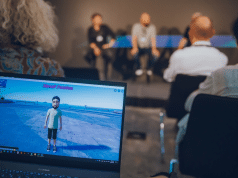For a successful congress, it is essential to have an attractive, user-friendly web presence and therefore undertaking a UX analysis is crucial.
What is a UX analysis? Through a UX (User Experience) analysis, websites are tested for their user experience. All factors of a website that affect usage are examined. This process is done from a user perspective to find the factors that negatively affect their experience. Based on the findings, inconsistencies are fixed and the user experience is enhanced.
A good user experience is the name of the game, as users generally leave websites if they are unable to find the desired information.
A poor user experience can have many causes, such as the general structure of the website, the hierarchy of the content, the structure and functionality of individual elements, and the visual design (readability, contrast, the quality of images, …), etc.
Images
The use of many images is becoming significantly more important, as they transfer information in a quicker, more comprehensive manner – thus less text and more images. But: Not just any stock photos should be used as decoration for the text: emotionally appealing images, which e.g. convey values (cohesion, joy …), and a consistent visual language for a coherent overall picture are recommended. Icons can also be used because they serve to loosen up and are easily recognized, which is what it is all about.

User guidance
Links should be named in a comprehensible manner to ensure that users can easily see where they lead (“What do I get if I click here?”). It is important to meet expectations: users will leave a page if they can’t find their way around. Users expect things to behave in a similar way to what they are familiar with: which is why we should only deviate from standards when necessary!
When labelling buttons, we should also bear in mind that it should be a: “What do I get?” (“Learn more”) as opposed to a “What do I need to do?” (“Read more”). Users want to get something and not perform something! This also includes a good structure: present benefits before costs, for example, emphasizing “what do I get” as opposed to “what do I have to give”.
Likewise, consistency must be taken into account: buttons with the same function should also have the same label. Information should be given where it is needed: if there are 5 steps to achieving a goal, don’t explain everything at the beginning, but rather gradually. Too much information at once can overwhelm or discourage you. The most important information on a page should also be the most eye-catching (highlighted in colour, through images/graphics, etc.) and placed at the top (i.e. not accessible only by scrolling). Unnecessary hurdles should be avoided: do not ask for too much information at once, instead offer forms and do not include too many steps/clicks to reach the desired goal.
In general: only open new tabs on the website for external links, not for internal links within the website.
Texts
Avoid long, continuous texts by using subheadings and text highlighting (e.g. bold). This way, readers can read/scan across the text to see if is relevant and interesting to them.
It should immediately become evident what a text is about. So it’s better to have clear headlines than creative ideas that don’t express anything (It is also important for search engine optimization for the headline to inform the reader what the text is about!)
As a rule, direct address is well received, as it tends to motivate readers to act.
There is a lot to consider when aiming to enhance the user experience and this is only part of it. If the site uses Google Analytics or a similar web analytics tool, you should regularly analyze the data. This way you can see anomalies, such as bounce rates at certain points. Understanding at what point a user enters a page and where they come from (organic search, social media posts, …) can also be very helpful.
CPO HANSER SERVICE’s own IT company GLOBIT GmbH creates congress websites but is not responsible for the content, layout and structure. This is usually handled by the project team and, in certain cases, together with the association. However, the more people work on a website, the higher the risk that inconsistencies will occur. For this purpose, GLOBIT has specialists, who regularly analyze the websites for user experience.
Lisa Schneller, Project Manager at CPO HANSER SERVICE says: “Since we started analysing our websites, we have gained more traffic and followers. And we’ve learned what to look out for.”
Source: INCON PCO














